Once Upon A Time
By William C. Schuette


Photos are from the Sauk County Historical Society collection, unless otherwise noted.
Copyright 2024
The photos and descriptions in this publication appeared in the Baraboo News Republic in the Saturday editions, and represent historic images from the archives of the Sauk County Historical Society. They begin in May of 2023.

Cover Photo: The Aldo Leopold Shack and Farm is a historic farm on Levee Road in rural Sauk County, Wisconsin. The property was acquired in the 1930s as a family summer retreat by the noted conservationist and writer Aldo Leopold and is the landscape that inspired his conservation ethic and the writing of his best-known work, A Sand County Almanac. The property is now owned and managed by the Aldo Leopold Foundation, which provides tours and other educational programs on the property and the adjacent visitors center. It was listed on the National Register of Historic Places in 1978 and was designated a National Historic Landmark in 2009. From Wikipedia

The old Baraboo City Hall, built in 1892 at a cost of $12,000, was located at 135 4th Street. The two horsedrawn water wagons were used to control the dust on the streets. In 1955, the bell tower was remodeled to include a stairway which was used by the Ground Observer Corps to watch for suspicious airplanes. In 1966 the building was razed and a new city hall replaced it. May 6, 2023


The Scheible & Dyrud horse-drawn hearse pauses in this 1926 photo in front of the Sauk County Courthouse. May 13, 2023


John C. Bunn set up a bakery in Baraboo in 1896. He probably would have lived out the rest of his days in quiet anonymity, except for his last name which was immortalized when it was discovered by a reporter from the Chicago Tribune. Forever after he became “Bun the Baker from Baraboo,” and was featured in short poems in the Chicago paper. June 2, 2023


This eight-stall roundhouse with sixty-foot turntable was built in 1871 for the division headquarters of the C&NW Railroad at Baraboo. During the next several years, the building was substantially enlarged to 20 stalls, which also included a blacksmith shop with ten fires, boiler and engine room, machine shop and storage rooms.

Devil’s Doorway on the South end of the east bluff is perhaps the signature rock formation of devil’s Lake. It was a good place to take a photo at the end of the 20th century. One wonders how the ladies were able to navigate the rocks with their long dresses. June 13, 2023
In the 1800s, the bicycle craze hit Baraboo’s men and women. Better streets and mass-produced bicycles meant just about everyone could afford one. This unidentified lady posed with her two-wheeler at Art Johnson’s photography shop. (Siekert Collection) June 10,2023




Laying a second railroad track over the Baraboo River in Reedsburg in 1890. July 8, 2023


The Reedsburg Stolte Hotel was built in 1896 for $20,000 (half a million dollars today). It was later known as the Huntley Hotel, and is currently The Cornerstone which is an apartment and business complex. July 13, 2023

Back stage crew at one of Baraboo’s opera houses, probably Capener’s at the NW corner of Oak and 5th. Built as a roller-skating rink in the early 1880s it became an opera house in 1887.William Jennings Bryant and Robert LaFollette spoke on its stage. It burned in 1905. July 18, 2023

These five Loganville ladies are returning from a successful fishing trip. One carries a minnow bucket and another, a can of worms. Early 1900s. July 25, 2023
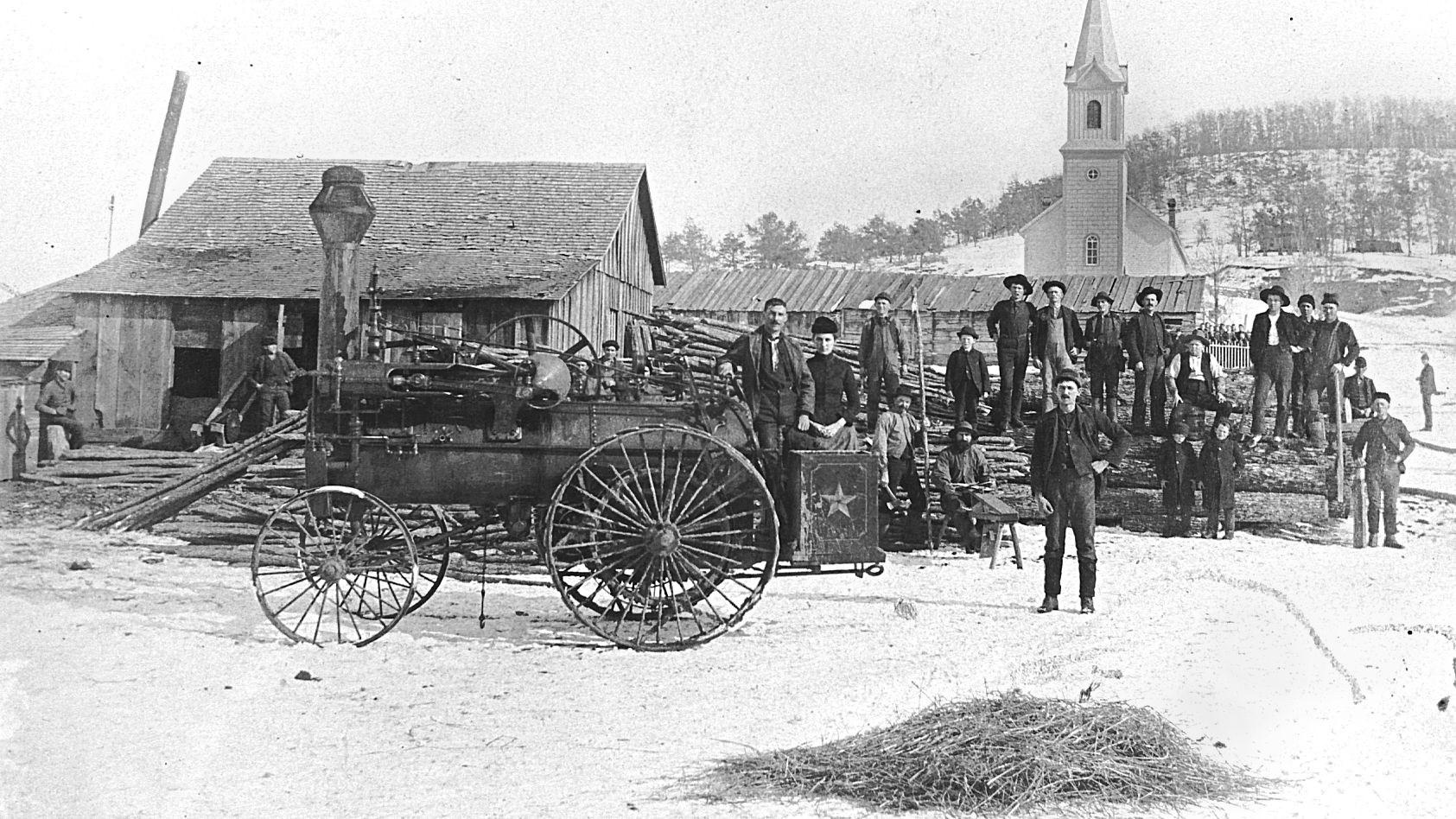
This steam operated sawmill was located in Loganville. The Star engine provided power to run the saw. St. Peters old Lutheran Church is located in the background. Early 1900s. July 25, 2023
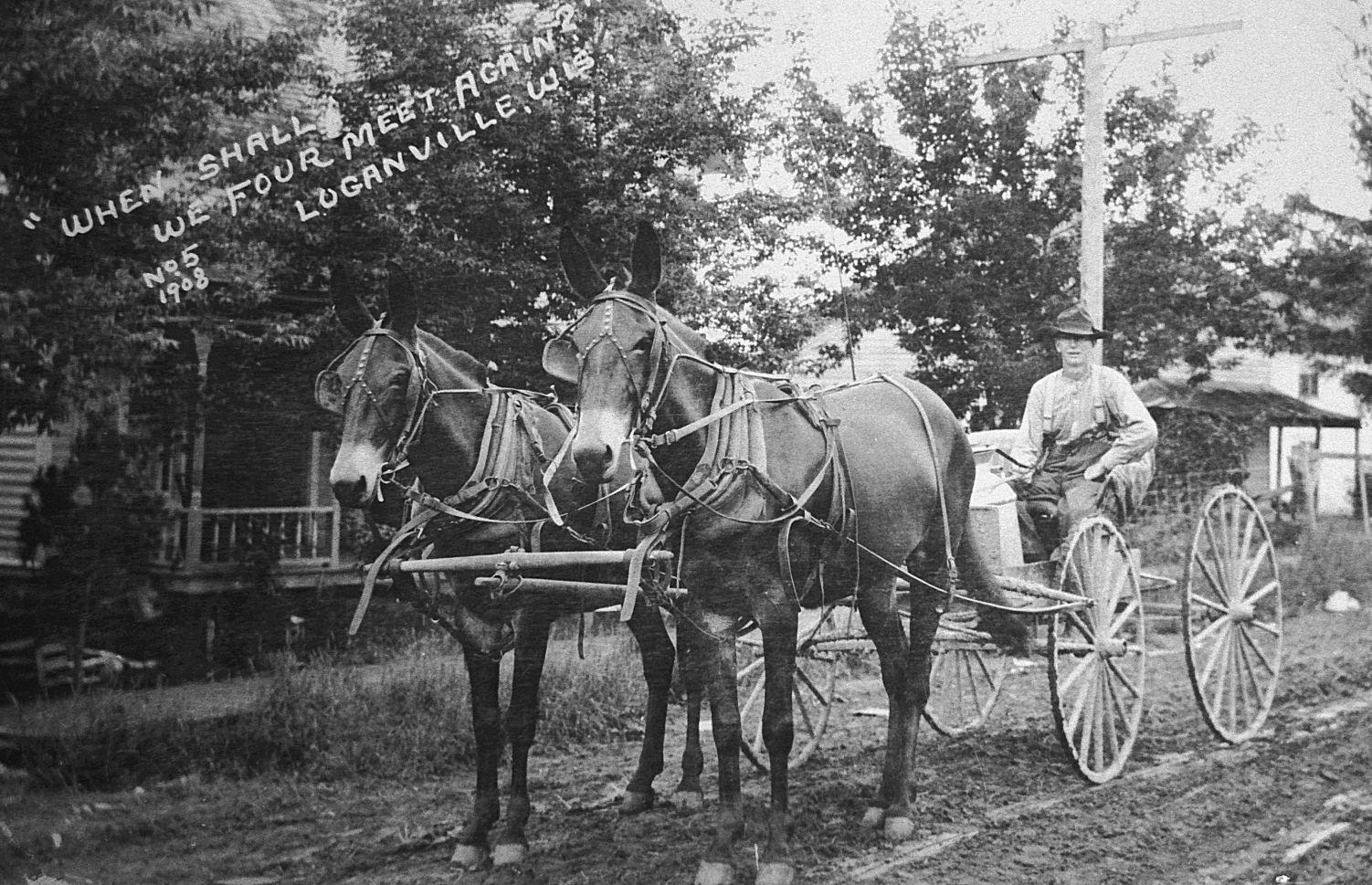
“When shall we four meet again -1908,” the fourth person is the viewer. George Hasz seated in the rig used to deliver mail when he opened route two. The rig was also used to deliver bottled milk in Loganville. The two mules were purchased by George in Minnesota and driven by him back to Wisconsin. August 1, 2023

The Badger Theater in Reedsburg was built in 1924. This was photo taken ca. 1959. Senator John F. Kennedy, who was running for president, campaigned from the theater stage in 1960. August 12, 2023

This eight-stall roundhouse with 60-foot turntable was built in 1871 for the division headquarters of the C&NW Railroad at Baraboo. During the next several years, the building was enlarged to 20 stalls, which also included a blacksmith shop, boiler & engine room, machine shop and storage rooms. August 29, 2023

Fans fill the grandstand a the Sauk County Fairgrounds to watch bicycle races around the turn of the 20th Century. August 29, 2023

Baraboo’s largest and grandest home was completed in 1906 for Al. and Lou Ringling, at the SW corner of Broadway and 5th. It was built by Baraboo’s Isenberg Brothers, who labored for a year and a half on the building. The residence contained lavishly decorated rooms for entertaining, and included a first-floor billiards room and a ballroom in the basement. Note the drive-through carriage porch on the left. The house became the home of the Elks Club in 1936. October 28, 2023

In November, 1890, a C&NW freight train ran off the track between Lyons and Baraboo. After one car jumped the track, the other 24 cars cascaded into the river behind it, demolishing one section of the bridge. No one was injured. The cars were loaded with wheat, flax seed, flour, and barley. The stone bridge abutments can still be seen in the river in Haskins Park, in West Baraboo. November 4, 2023

This 1871 view of the courthouse, is the earliest known photograph of the square and shows the corner of Third and Oak towards the northwest. Shown is Baraboo’s second courthouse, which was built of brick and finished in 1857. On the north side of the square, behind the flagpole, is the Wisconsin House, an earl hotel that was demolished in 1912 to make room for the Al. Ringling Theatre. (Baraboo State Bank Collection) November 11, 2023
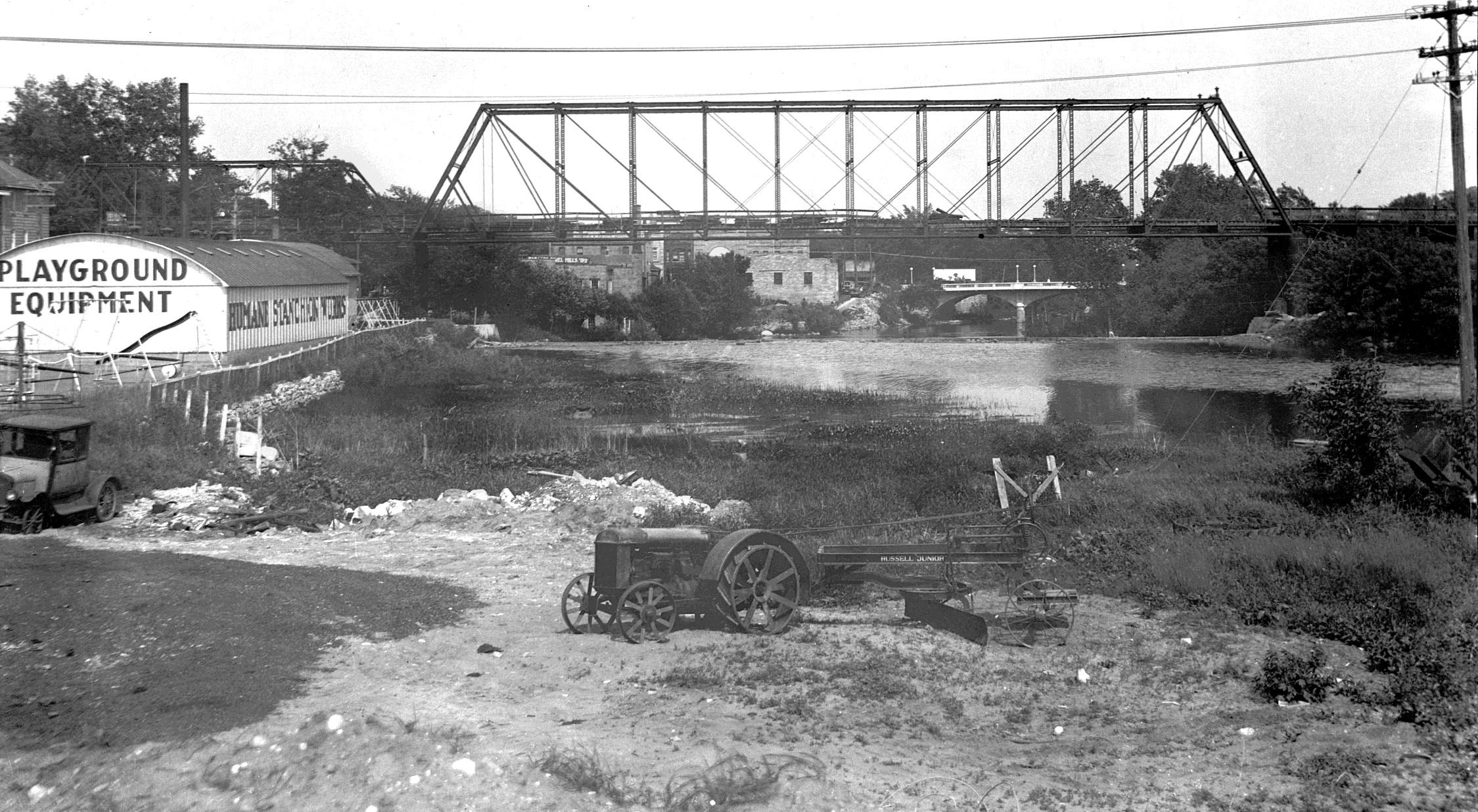
Baraboo’s old High Bridge built in 1890, spanned the river 26 feet above the Oak Street Dam. It consisted of two spans, one 234 feet long and the other 120 feet. It served the community for nearly 30 years and was dismantled in 1929 and replaced by the Broadway Bridge. November 18, 2023

The Cahoon iron mine was located about one mile south of Baraboo. It operated from 1911 to 1919. The large structure on the left lowered miners down the 400-foot shaft, and lifted the iron ore to the surface. The water pump and hoist were operated by an electric motor. Previous mine operations were powered by steam engines. The C&NW railroad ran a spur from the main line to the mine. December 2, 2023

In 1886, the 500 block of Oak Street was once again completely filled with buildings after a disastrous fire in 1878 nearly wiped out the entire block. Everything needed for daily living could be had on this block, including groceries, books, jewelry, toiletries, baked goods and clothing. The tallest building in the center was built in 1884 and contained an Opera Hall upstairs. It proved to be too small and was briefly converted into a roller skiting rink. December 9, 2023

The Effinger Brewery, which was located on the south side of Lynn St., was Baraboo’s longest running brewery. In the late 19th and early 20th century, it was not uncommon to see a beer wagon delivering fresh lager to the many taverns throughout town. December 16, 2023

Sauk County’s old jail was built around 1890, and included the sheriff’s residence. While not only looking the pat with its battlements and fortress-like appearance, it was also deemed one of the best designed in the state for its purpose. This building was razed in the 1960s. December 26, 2023
This photo was taken in 1903 of men quarrying quartzite in the Pink Lady mine which is located in Ableman Gorge near Rock Springs. The quartzite, which was laid down over a billion years ago, was broken up and used as ballast between railroad tracks, as it still is today. The log poles were used to lift the heavy stones onto the railroad cars. The young boy, holding the horse, also worked in the mine. January 6, 2024


This threshing crew stopped in Loganville in 1894, long enough to have a photograph made. The threshing machine, pulled by a steam engine tractor which also powered the thresher processed the oats on area farms. The oats bundles were pitched off horse-drawn wagons into the hopper at the front of the machine where the oats grains were separated from the straw. The straw exited the rear of the machine where it was stacked, and the oats came out of an auger and was collected in sacks or wagons. The wagon behind the tractor carried water for the steam engine. January 30, 2024

Springfield steam-powered road rollers are shown working on the reconstruction of Hwy 33, two miles east of Baraboo in 1910. The water tank on wheels on the left, supplies water for the two steam engine rollers. February 10, 2024

Hundreds of people are watching as this early 1900s “hot rod” is racing around the track which was once located at the Sauk County fairgrounds. Motorcycles and horses also raced here during special events which were held annually. February 17, 2024
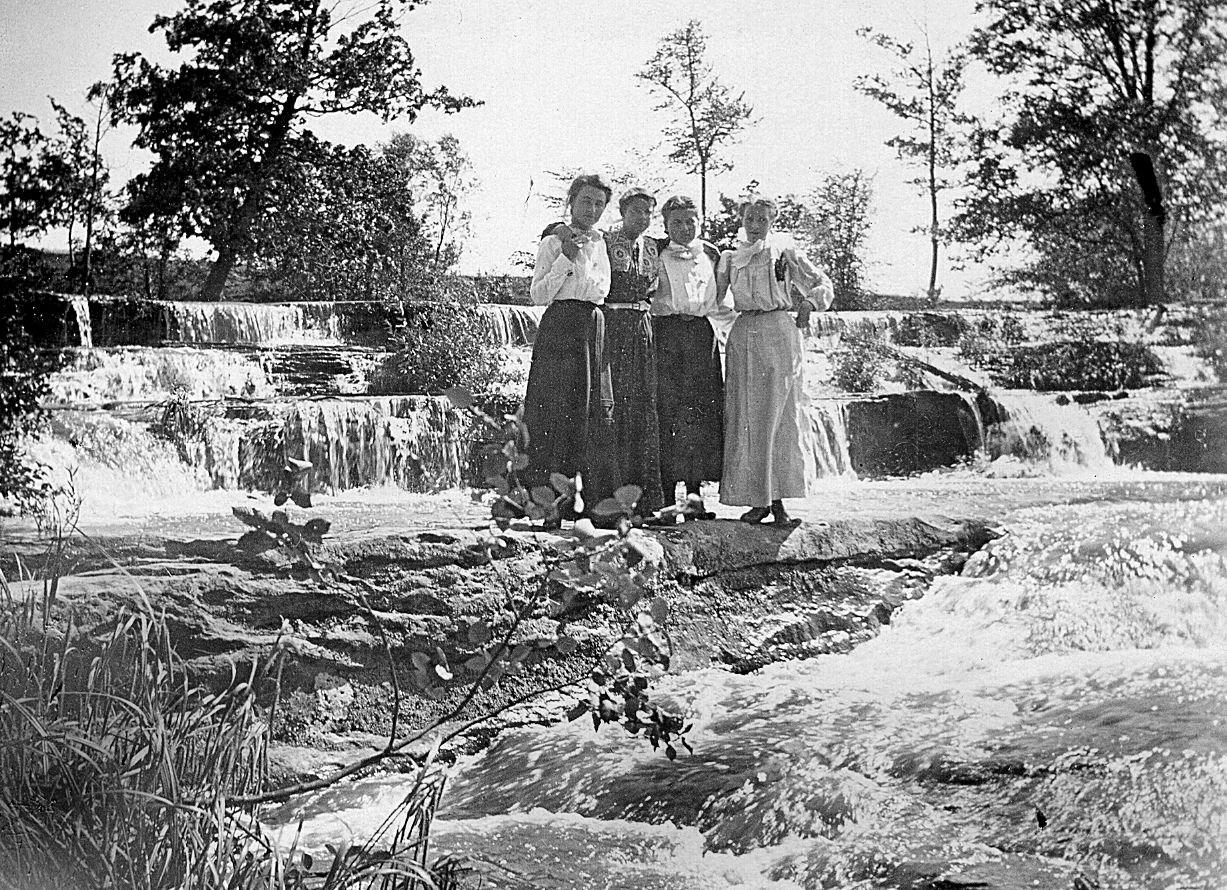
These young ladies are standing on the Skillet Creek Falls located off south Hwy 12. This early 1900s image was taken before the trees had invaded the background above the falls. Now located on private property, it was once a gathering place for local adventurers. February 24, 2024

This copper still was once illegally producing moonshine is Sauk County during prohibition. Shown here in the legal library of the old county courthouse, is the tub where the grain mash and yeast were cooked. The steam then entered the coil which was placed in a barrel of cold water, and condensed back to liquid alcohol. Sauk County was one of the largest suppliers to the Chica-

A day at the beach on the south shore of Devils Lake. Taken in the early 1900s, these kids are more likely visitors, and not swimmers. The adults in the boat are probably taking a leisurely trip around the lake. March 16, 2024

Frank Kleb Restaurant, store and hotel, May 4, 1903, in Rock Springs. Many small towns had similar businesses in the early 1900s, so that travelers would have a place to stop for a meal and place to sleep, before proceeding on their journey. Rock Springs also was a railroad stop, and passengers could disembark for a meal. March 23, 2024

The Baraboo High School, built in 1870, was destroyed by fire in February, 1906. Students were safely evacuated as smoke poured into the classrooms from the registers. Unable to save the structure, firemen were forced to save nearby buildings. Bystanders and students were able to rescue books and records from the burning building. The school building was a complete loss. March 30, 2024

A Loganville Street which is being macadamized around 1913. The street is first covered with compacted crushed gravel to support the load, then covered by light stone to absorb the wear and tear, and to direct water to the side of the road. April 9, 2024

The North Freedom Canning company was organized in1919. A steam generating plant and boiler house was built, and a half million cans of peas and corn were produced during the first three months of operation. In the 1950s the plant fell on hard times, and by 1960 it had ceased operation. April 13, 2024

One of the earliest photos of Baraboo, taken in 1866. It shows the area around the Ash-Walnut Street bridge looking NW. The foreground shows the Pratt Sawmill. The large building in the center is the three-story Bassett Flour Mill built in 1856, which could produce 25,000 barrels of flour a year. April 20, 2024

Engine 597 stands in front of the two-story railroad eating house, built in 1878 and located on the site of the future two-story brick depot in Baraboo. The depot sat behind the eating house. The first car in the train is a railway post office car. April 27, 2024

Before the advent of the automobile, rural mail was delivered by horse and buggy. This rural carrier operated in Sauk County during the early 1900s. The Postmaster General began a rural free delivery program in 1897 to get mail into rural areas. Carriers in each state were hired at 83 cents per day and had to provide his own horse and buggy. May 11, 2024

The Sauk City depot, seen here in 1907 in the center of the photo, was cut in half and moved down the tracks along Water St. where it still stands today. This “new” depot then served both Prairie du Sac and Sauk City. These railroad tracks were removed several years ago and it is now the Great Sauk State Trail. May 18, 2024

Main St. in Sauk City, ca. 1905-1910. Looking North from Water & Jackson St. The Eagle House Hotel on the right became the Riverview Ballroom in 1942. Dark building, 4th from right is the Astor House, built in 1850s. It was a tavern, dance hall & café. Today it’s a tax office. First building on left was the Trivoli Hall, built in 1860s. Became Du-Drop Inn in1920. Today it’s the Village Pub. May 25, 2024

The John Rosche Foundry began making iron stoves in 1859, with the raw iron being shipped by wagon from the Ironton mine. Parts for the stoves were cast in sand molds, and then laboriously assembled into stoves for cooking and heating. During the hop boom in the 1860, he probably made stoves to heat the hop houses. In 1868, Rosche moved his operation to Milwaukee. June 1, 2024

This view of the north shore at Devil’s Lake was probably taken around the time the area became Wisconsin’s third state park in 1911. The east bluff is in the background. Several small boats are tied up next to the larger launch, all presumably waiting to be rented. On the right in the background, a passenger car sites on one of the two tracks that ran through the lake gap. June 9, 2024

Baraboo’s public square was laid out in April 1847 as a center of the new county seat. A few years later, John Taylor purchased lots on Third Avenue and constructed four wooden commercial buildings which were dubbed “Taylor’s Row.” Two of the four buildings lasted well into the 20th century, miraculously surviving the fires that wiped out most other wooden buildings downtown. While the corner building, at far right, was eventually taken down and replaced, the remaining Taylor building, fourth from the right, still survives. June 15, 2024
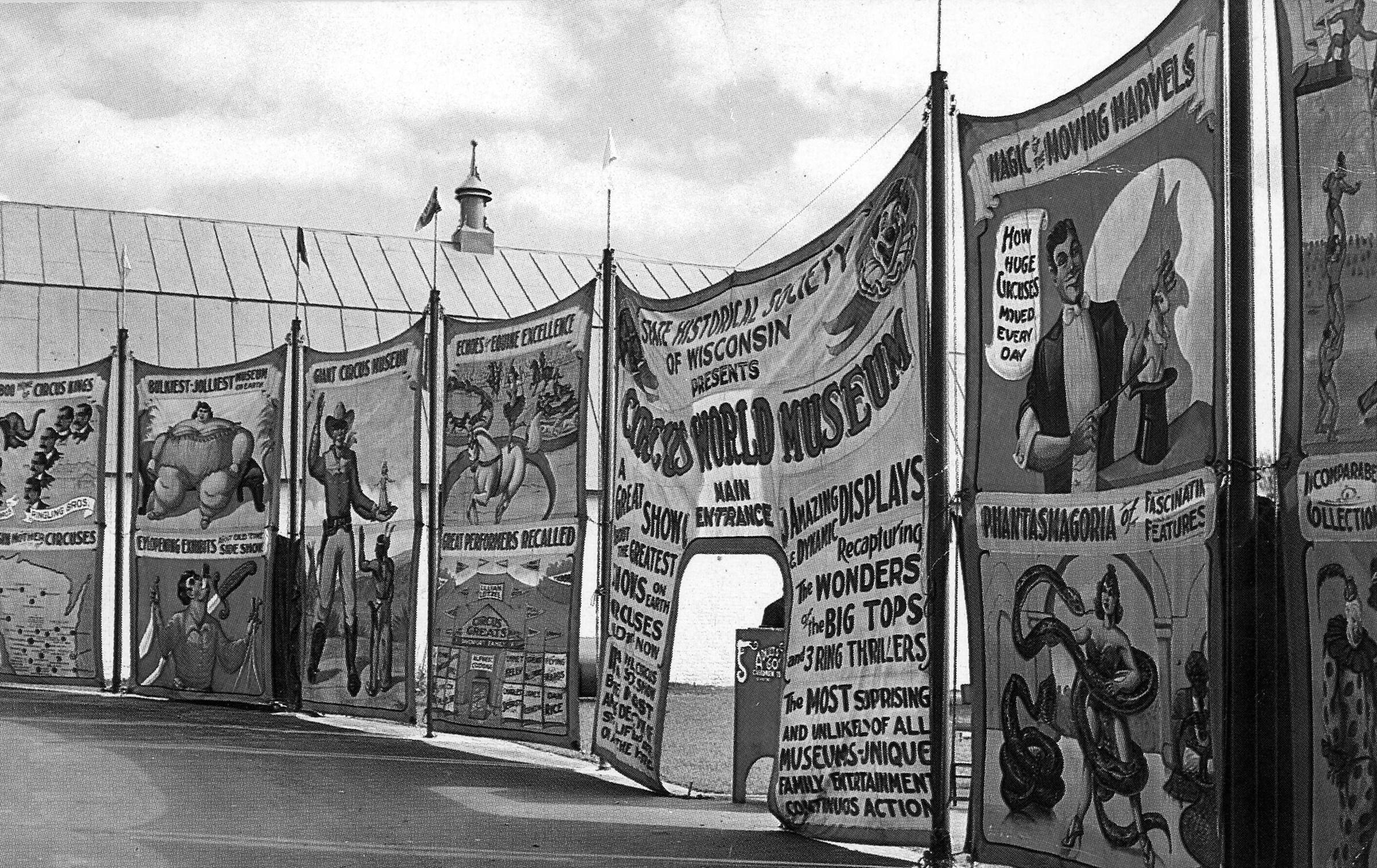
Circus World Museum opened on July 1, 1915, on the grounds of the original Ringling Brothers Circus Winter quarters along Water Street in Baraboo. The first building purchased for the historic site was the camel house, which appears behind the painted banners that made up the original entrance to the museum when it opened. The banners were painted b old sideshow banner artists and were strung up between the camel house and ring barn, which was the second building acquired. June 22, 2024

Third Street was anchored by the Corner Drug Store, at right, for over 140 years. Across the street, a bank has stood for over 110 years. This view from around 1940 shows a busy street with angled parking on both sides. In the background is the steeple of the Presbyterian church which was built in 1873. June 29, 2024

A patriotic parade from around 1920 included this fife and drum trio marching on Fourth Avenue. The picture was taken sometime after the Al. Ringling Theatre was finished in November 1915 but before the Trimpey Studio building was constructed in 1922 replacing the small wooden building shown between the two drummers. The parade could have been part of the Independence Day celebration or an event marking the end of World War I. July 6, 2024

Pewit’s Nest State Natural area, is a picturesque sandstone gorge, which formed after the last glacier and is located off County Rd. W near Baraboo. It was named after a tinkerer who had a workshop 10 feet above the falls. The remnant of a water wheel can be seen in this early photo. It once powered lathes for repairing farming equipment. He also repaired clocks, guns, watches and anything else that was damaged. Later, a sawmill was located there which took advantage of the waterwheel. July 16, 2024

The delivery wagon of Peck’s South Side Department Store was operated by Nelson “Brownie” Bartley in 1907 and offered something in the way of convenience for patrons who couldn’t make it to the store. A quick phone call to the store meant that your goods would be on their way caried by this horse and wagon. The store carried such items as fabrics, sewing notions, wallets, purses and seasonal food items. July 20, 2024

In the mid-1860s, hops crops in the east failed and Sauk County was in the midst of a hops boom when prices for hops hit an all time high. When harvest time came, hundreds of workers were required to harvest the crop. In 1857 the crop in Sauk County accounted for 20 percent of the nations production, bringing an income of two million dollars into the county ($75million in today’s dollars). The boom ended several years later when crops in the east recovered. July 27, 2024
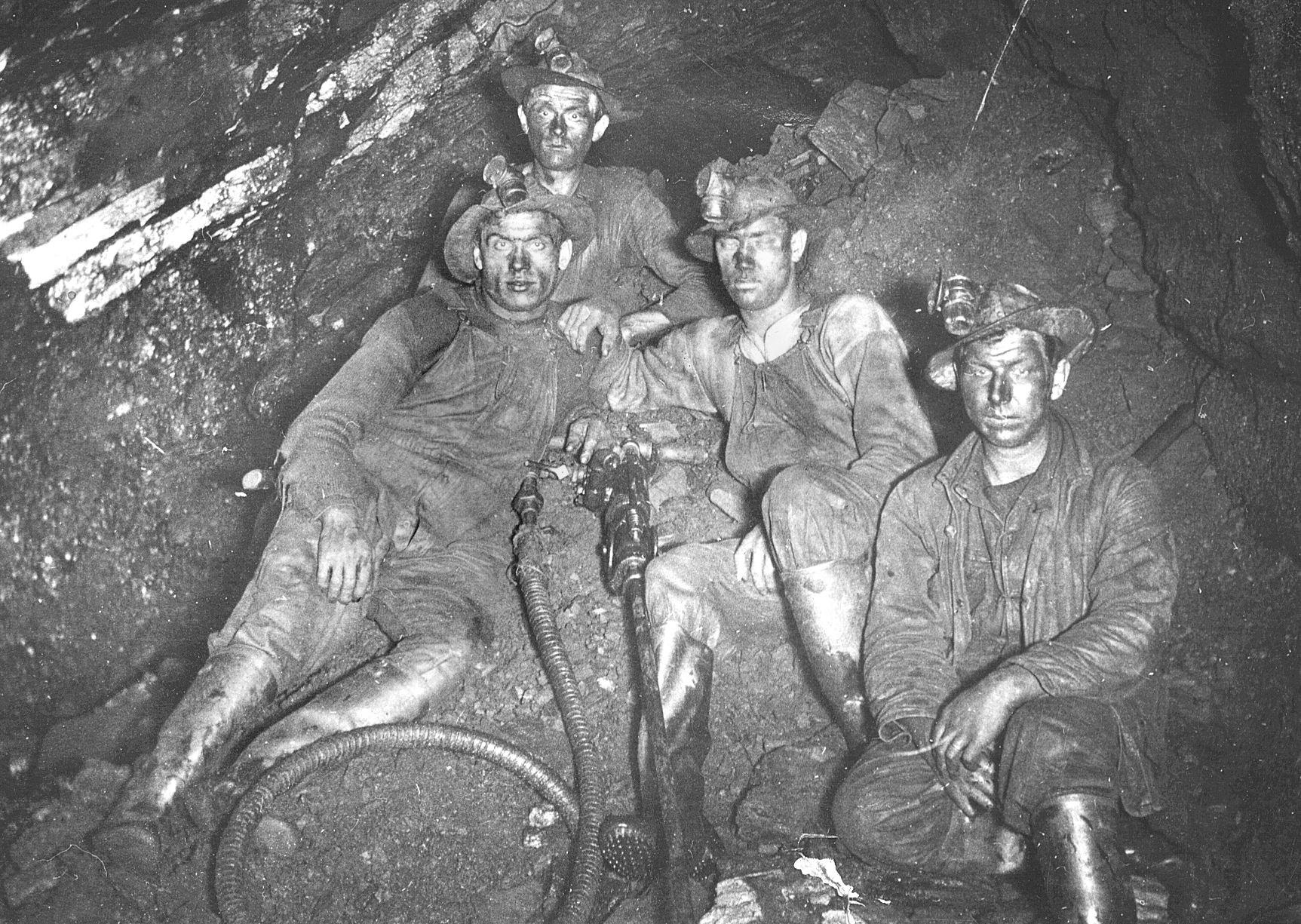
Sauk County was once the site of many iron mine operations, from Ironton to LaRue, North Freedom and Baraboo. The Cahoon Mine near Baraboo, was first dug in 1911 and ran until 1925, when constant flooding in the mine shafts closed it down. Work inside the mine was cramped, dirty, dark, dangerous and not for the faint of heart. July 3, 2024
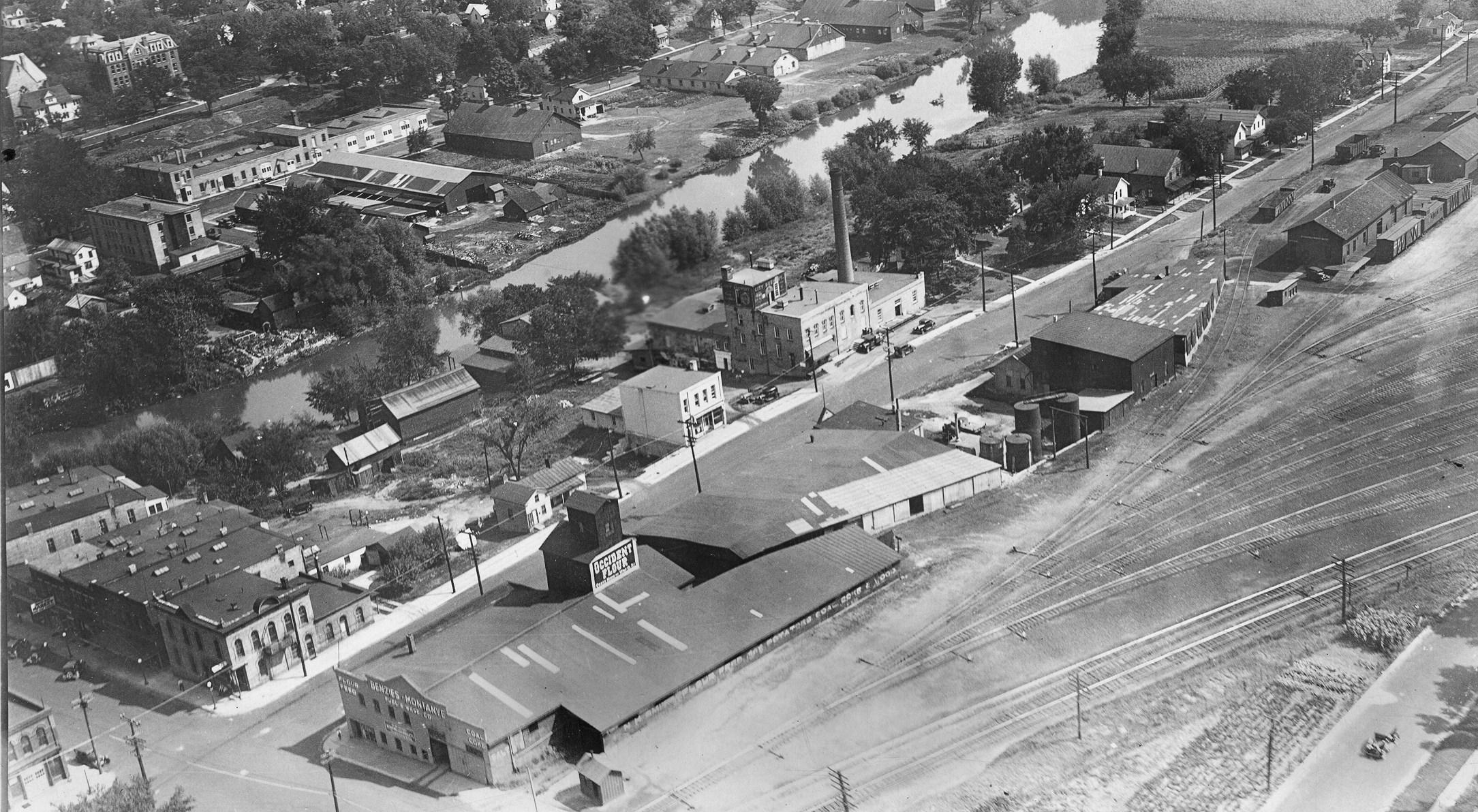

This B-29 Superfortress, “City of Baraboo” and her crew at a base in the Pacific. They flew 24 missions against Japan during WWII. To the far right is 1st Lt. Garvin R. Kowalke, Airplane Commander, from Baraboo, Wisconsin. Airplane commanders had the option of providing the nose art on their aircraft. August 17, 2024

Employees of the Settergren & Pittman Hardware store, located at 125 3rd Street in Baraboo, shown here on the delivery wagon. The store sold stoves, pumps, tinware, carpenter’s tools and other hardware items. The two men bought the store in 1902 the partnership lasting until 1909 when Settergren took over the business. He conducted the hardware business there until 1913 when it was moved to 3rd and Ash Streets. August 31, 2924

The Scheible & Dyrud Funeral Home hearse in front of courthouse in 1926. The partnership of Scheible & Dyrud Furniture & Undertaking lasted until 1946 when Scheible died. Dyrud died that same year. Leonard Ploetz bought the business in 1949 and renamed it Ploetz Furniture. September 7, 2024

The Gem City Oil Company was located at 701 Oak St., Baraboo. In 1922 ownership of the former automobile sales garage changed hands and became known as the Gem City Filling Station. A circular drive was installed along with several gas pumps. September 14, 2024

: Forty-six railroad men pose with one of Chicago & North Western’s engines sitting on the giant roundtable at the Baraboo rail yard. The roundtable served the roundhouse, which eventually grew to include 28 engine stalls. September21, 2024

These cottages were located just east of Ochsner Park at the corner of Park Street and Eighth Avenue and offered visitors the convenience of staying in town. The location also offered campsites complete with homemade wooden picnic tables. September 28, 2024

The Wisconsin House stood on the north side of the square where the Al. Ringling Theatre eventually would be built. It was one of Baraboo’s earliest structures. The right half was one of the first brick buildings and was a tavern and hotel. Here, it is a feed barn. October 5, 2024

Ochsner Park was dedicated in 1919, which also included a new bandstand. In 1926 a zoo was added to attract more visitors. A pen was built for two bears, along with an octagonal building to house some monkeys. The zoo soon grew to include a deer pen, duck pond, and cages for smaller animals. October 12, 2024

The Sauk County Historical Society unveiling a plaque at the Yellow Thunder memorial. Yellow Thunder died in February of 1874 near the Wisconsin River just north of his forty acres and he was buried near his wife. In 1909 a small stone monument to Chief Yellow Thunder and his wife Washington Woman was constructed along highway A about half a mile from his property. October 19, 2024
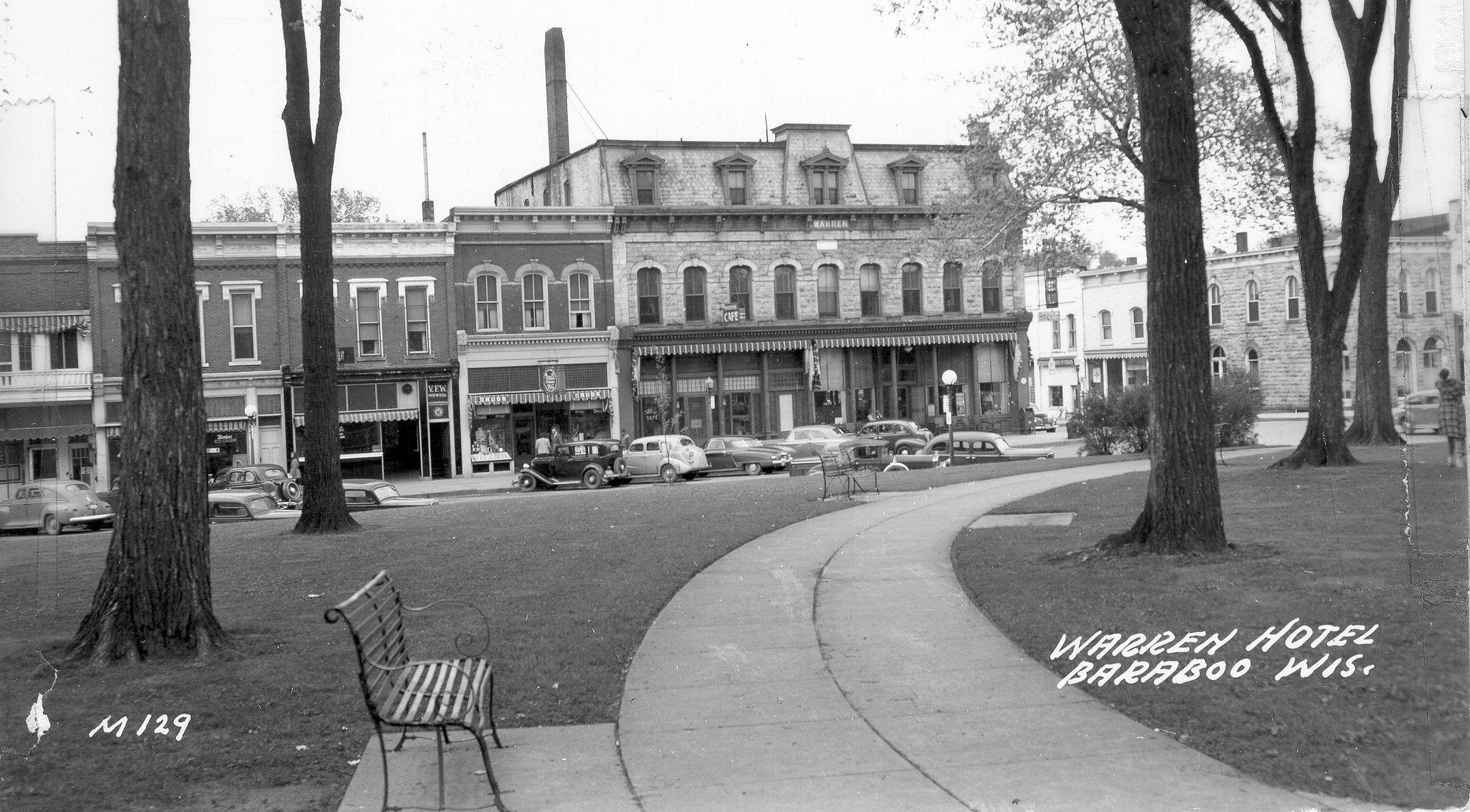
The Warren Hotel, center, originally built in 1878 and enlarged dramatically in 1884, anchored the northeast corner of the square for nearly 100 years before it succumbed to fire in the 1960s and was torn down. October 26, 2024

This 1890 photo of the YMCA building, which was located at the NW corner of Second and Ash Street, was built in 1889 at a cost of $15,000. It contained a reception and game room, a reading room and library with 400 books, a member’s parlor and a lecture room. The basement contained a gymnasium, two bowling alleys, along with bathrooms, showers and tubs. November 2, 2024

These ladies in their early 1900s bathing attire, seem all the fashion as they pose near Sauk City. Swimming “dresses” from that era were made of wool or linen, which made them very heavy upon exiting the water. Who knew that hats were a fashionable swimming accessory. November 9, 2024

The McCormick reaper was a godsend to farmers when invented in 1831. It replaced the tedious job of mowing and hand-binding sheaves of grain with a machine that would mow the grain, assemble it into sheaves and bind them up. It combined the steps of several machines which allowed farmers to more than double their crop size. November 16, 2024

If a farmer wanted to construct a new barn, he would put out a call to neighbors and friends to come and help. The wives would prepare the meals while the men put together the new structure. Known as a barn raising, it occurred during June and July between planting and harvesting season. Logs for the project were cut during the winter and taken to the sawmill to be cut into lumber. Many barns in Sauk County were constructed in this manner. November 23, 2024

The Hillpoint school on the left was built in1869 for $600, with hardwood floors, patent seats and a slate blackboard. Fifteen students attended that year. The new school, on the right, was built in 1924 at a cost of $5,000. In 1939 a radio was purchased which brought the students closer to world affairs. Fresh milk was supplied to the pupils in 1955. The school closed in1961 when rural schools were consolidated. November 30, 2024

These prospectors are drilling in search of an iron ore vein. Iron was discovered near Ironton in 1858, which set off a boom that lasted until 1895.The increasing cost of timber for charcoal, and the decreasing price of pig iron, forecast the knell of the small operation at Ironton. December 7, 2024

The Tuckertown church and schoolhouse are located on Hwy 154 west of Loganville, on Tuckertown Road. Tuckertown or Tuckerville was not a village, only the two buildings mentioned were located there. The little rural cemetery was organized in 1858, and the church was built in 1876. Most of the people buried in the cemetery were from England. The last burial was in 1945. December 14, 2024

This Witwen blacksmith shop was built in the late 1800s, and was located on the west side of the road on Hwy E, just south of the general store. Blacksmith shops were a vital necessity for farmers for machinery repair and fabrication. Virgil Ward owned it when it closed in 1970. December 21, 2024


The ghost village of White Mound (also known as Billy Town) was located on the banks of Honey Creek, between Loganville and Plain on Highway 23. Established as a stagecoach stop, the tiny village at one time boasted a tavern, post office, general store, and a Methodist Church. When the automobile replaced the stagecoach, the village faded into history. December 28, 2024
